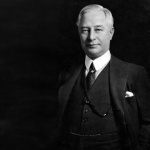The history of Everglades City is relatively short compared to other parts of the United States. However, what it lacks in length, it makes up for its depth and richness. The Everglades is filled with stories throughout its history that mirrors the perfect example of the aspirations, tenacity and the vision of the American people. Let us take a trip down memory lane as we discover how this untamed beauty became settled and became a major tourist attraction that it is today while still keeping her natural gifts.
Florida did have settlements in the Pre-Columbian and Post-Columbian period. In fact, Florida was home to Spanish missionaries who set up camps around the mid-1500s. However, most of southern Florida saw very little European settlement after that; the reason for this being that the region, especially around the present-day Everglades area, was so vast, untamed and impenetrable that most of the region was left uncharted then. However, in Pre-Columbian times, an indigenous group known as the Calusa did live along the coastal areas of the Everglades. But by the 1600’s their population dwindled as they suffered from constant wars and diseases brought on by colonialism.
By 1800, the Everglades was primarily inhabited by a new indigenous group known as the Seminole. The Seminole were a group of indigenous peoples from various Eastern seaboard tribes who fled into the Everglades so that they could avoid persecution from the other states and maintain their traditional mode of life. The place had also seen its share of white people who deserted their armies and African slaves who managed to escape their masters and used the area as a hiding place and took advantage of its rough terrain and inaccessible marshes.
It was towards the late of that century when the area that is now Everglades City began to see true settlement. At first, there came individuals from other parts of the region, seeking to flee modern life, the military, society or the law. These people lived off the land, primarily making money from selling alligator hides, animal pelts, and plumage to trading posts and lived in a pragmatic, tolerant harmony with the local Seminoles. These individuals referred to themselves as the Gladesmen, and were happy to live their lives in isolation; away from the rapidly urbanizing 19th century world they lived in.
That, however, began to change. The area soon attracted people who soon brought education, trade, and some industry to the area. These individuals included Ted Smallwood, the founder of Smallwood Store on Chokoloskee, EJ Watson, who owned an ran a very successful sugar syrup plantation, and the Storter family, which established a general store, and taught the local children in the drawing room of their large house.
Soon, churches began to emerge, including the Chokoloskee Church of God, and the Community Church in Everglades City, and other industries, like fishing, began to appear. More homes were built, and more settlers came. The community called their town, Everglade, after the surrounding Everglades around them.
In the 1920s, Florida and the US government began to sell land shares to encourage new settlers to the area south of Lake Okeechobee, and also to bring investors into the area. One of these individuals was Barron Gift Collier. Collier was an entrepreneur, who saw the opportunity of expanding his business prospects in Florida. He came to Everglade to build a town that would serve as his headquarters for further ventures to build hotels, banks, telephone companies, a cruise liner and more.
When he arrived in Everglade, he ordered the construction of several major buildings. This included a city hall, a laundry building, and a bank. The purpose of these buildings was to help provide much needed services to his employees. Residential buildings were also constructed to house Collier’s employees. Collier also had the old Storter estate transformed into a hunting and fishing club and began to attract tourists to the area. The city soon changed its name to Everglades City, and initially became the government seat for what became Collier County.
As the years went on, Everglades City saw vibrant changes and growth. For example, the city eventually got a hospital, a movie theater, a train station, and was linked to a major highway, which later became known as the Tamiami Trail. It looked like Everglades City was going to become one of the most powerful cities in Southwest Florida. However, it wasn’t meant to be.
In 1960, Hurricane Donna, a massive category five hurricane, devastated Southwest Florida. The damage to Everglades City was devastating. Hundreds of people died, and quite a few of the major buildings in town were destroyed. As a result, the county seat was moved to Naples, and Everglades City never rebuilt itself to its pre-Hurricane Donna status.
However, things will take a good turn because at 1965, the Florida legislature made Everglades an official city and was thus, a momentous event. And in the 1970s the city marked the introduction of Everglades City’s major festival the Seafood Festival, which still attracts thousands of visitors each year during the first weekend of February. The other major industry, commercial fishing, especially for grouper and stone crabs, still continues to see growth.
Today, Everglades City is a popular day trip to visitors looking to see the Florida Everglades, try fresh seafood from the Gulf of Mexico, and/or see a destination that gives them a taste of old Florida. You can come here for one or all three of these reasons, but maybe add coming here for the history as well.










